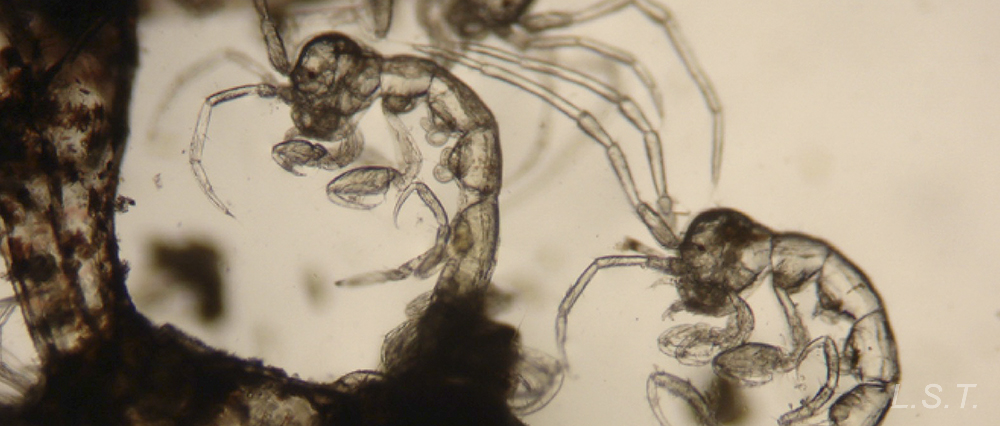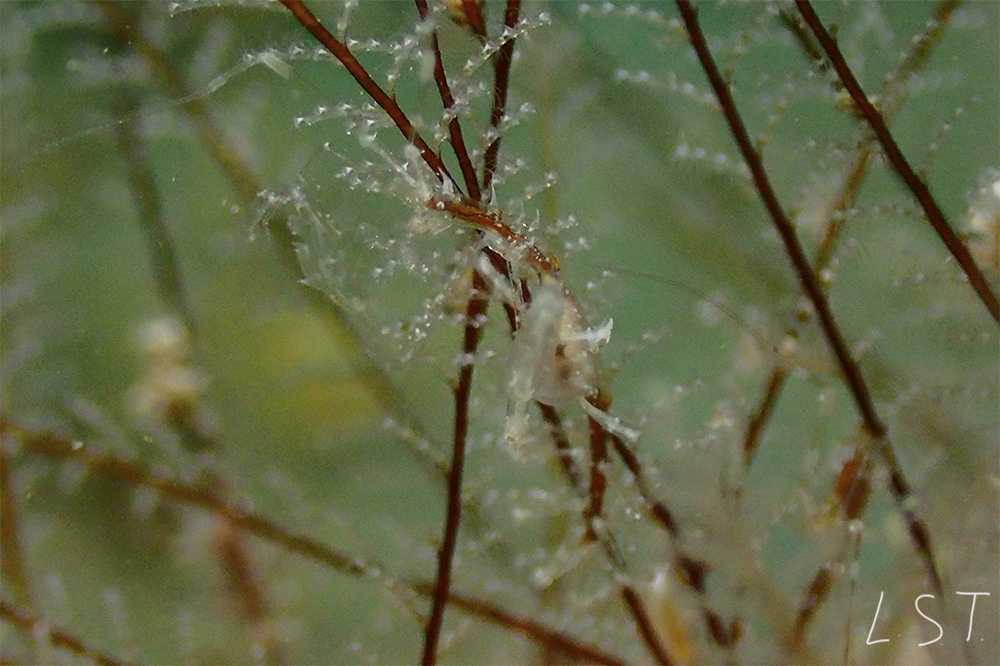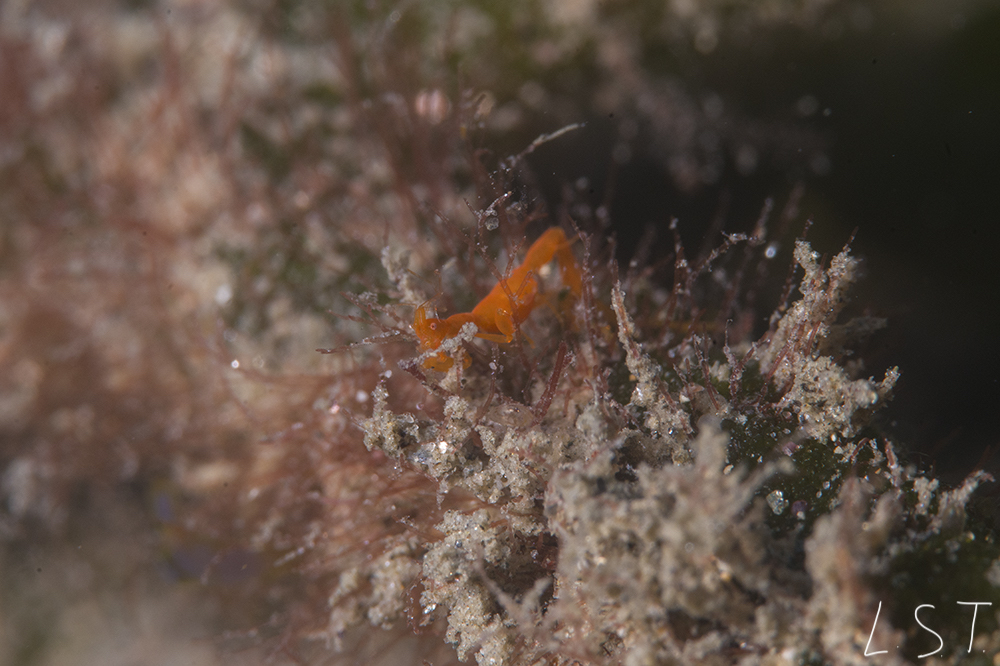Kingdom: Animal; Phylum: Arthropoda; Subphylum: Crustacea; Superclass: Multicrustacea; Class: Malacostraca; Subclass: Eumalacostraca; Superorder: Peracarida; Order: Amphipoda; Suborder Senticaudata; Infraorder: Corophiida; Pavorder: Caprellirida
Superfamily CAPRELLOIDEA
Caprellids are small crustaceans (1 mm-3 cm) which play an important role in marine ecosystems. They belong to the family Cparellidae of the order Amphipoda. They are very close to the sand fleas, which are the “small prawns” we see jumping on the shore. Caprellids are essential to the diet of many fishes and molluscs, even being the basic food. During the last decades, the study of these interesting invertebrates has significantly increased in our coasts. A short walk around a marina having a look to the floating pontoons can take us to a new world where caprellids are the dominant creatures.
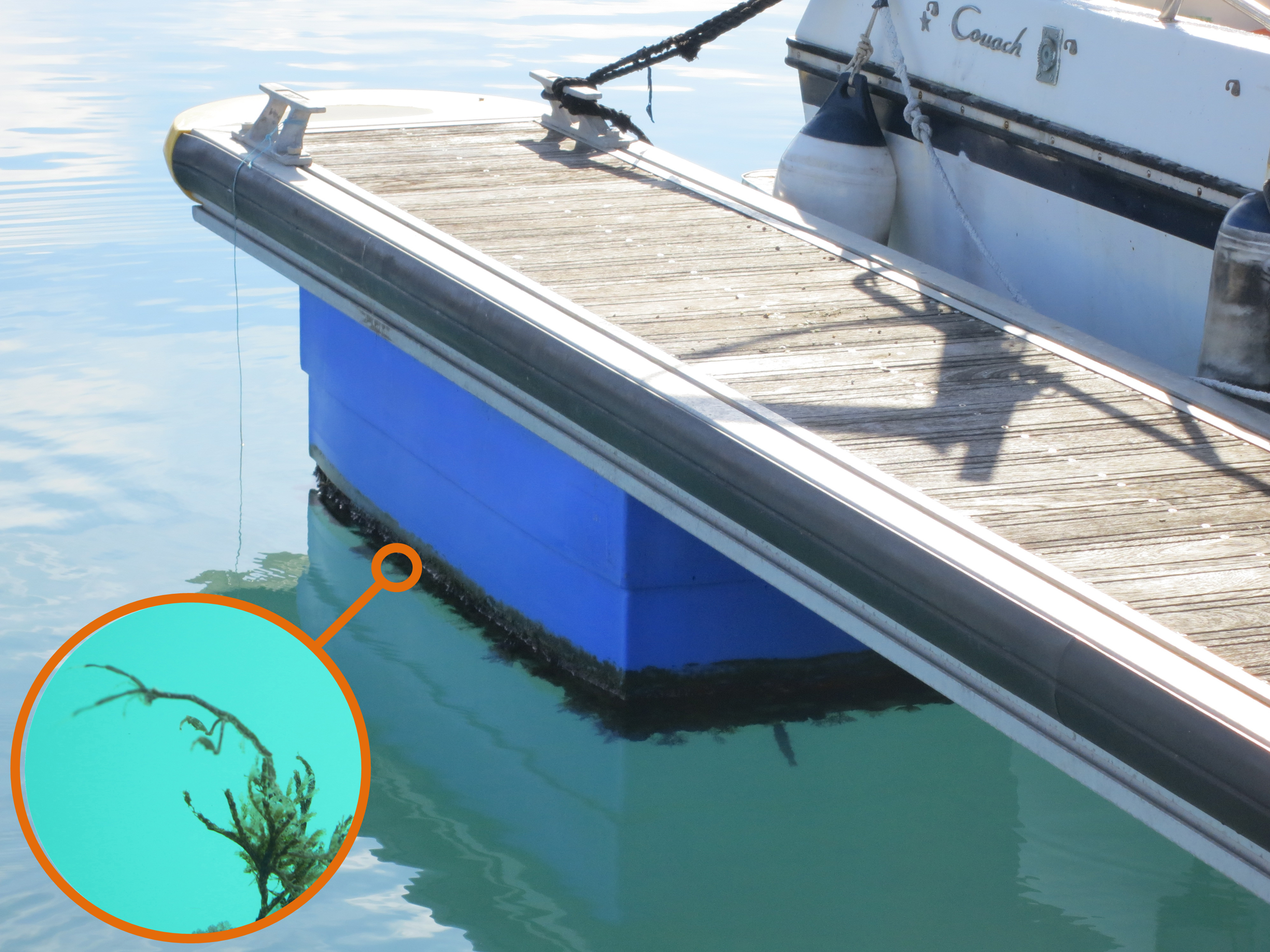
Caprellids have a very peculiar morphology that reminds by its aspect to the praying mantises. They have two pairs of antennas and the thorax (pereion) is formed by seven segments. They present two pairs of gnathopods (tweezers); the first pair is usually smaller than the second. The number of pereopods (legs) is variable, five pairs can be present (from segment 3 to 7) or only three pairs in segments 5-7. In many genera pereiopods 3 or 4 are reduced or absent, as in the genus Caprella, which is dominant on our coasts. Caprellids can be distinguished from other crustaceans, such as gammarids, by the presence of a tiny abdomen or pleon without appendages. The males are usually larger than the females and have larger gnathopods.
Caprellids inhabit from the intertidal zones to depths below 3000 m. They can be easily found associated with algae, seagrasses, hydrozoans, bryozoans, sponges, corals, sediments. They are also very frequent on ropes, buoys, boat hulls and pieces of driftwood, where they can reach high densities. There are even species adapted to live on turtle shells. Some species can establish very specific associations with other marine invertebrates, such as gorgonians, large crustaceans and echinoderms. They are mainly detritivorous, although some species are carnivorous or herbivorou. They have a very fast life cycle and in about 15-30 days of life reach sexual maturity. Fertilization is internal and development is direct (they do not have l planktonic larval phase as it happens in many crabs). The females have a marsupium (brood pouch) where they incubate the eggs (Photo 2) and once the juveniles are formed they emerge from the fully formed marsupium with a similar appearance to adults. In some species there is parental care and juveniles remain clinging to the mother's body during the first days (and even weeks) of life, receiving protection from predators. As arthropods, they molt the cuticule several times along their life
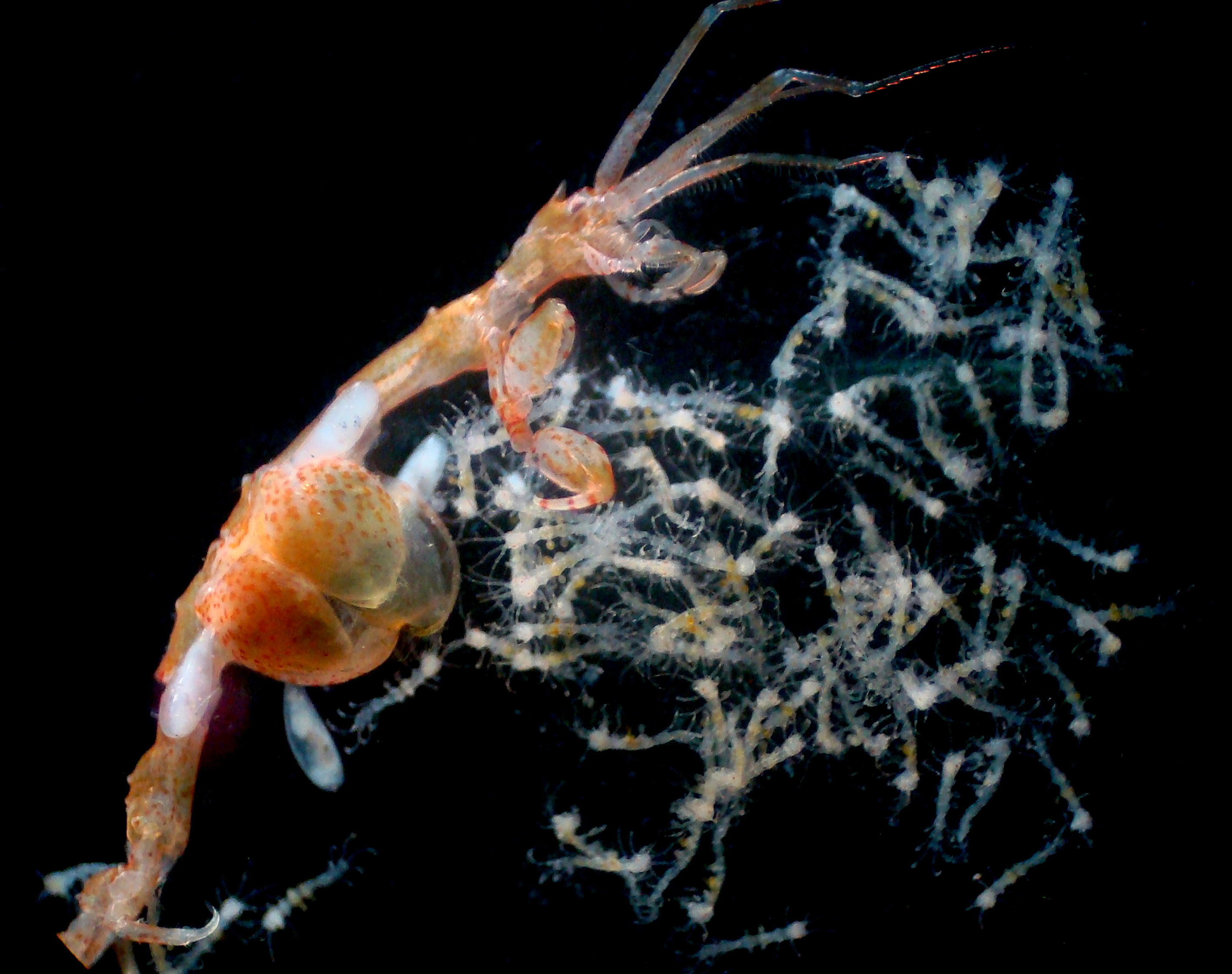
One of the most interesting applied aspects that justifies the interest of the study of caprellids is their use as bioindicators. Recent works developed in the Strait of Gibraltar have shown that studying the caprellid community of a given area we can know if it is polluted or not, without the need of costly physical-chemical analysis. This is due to the fact that different species of caprellids have different requirements. When species such as Caprella santosrosai, C. ceutae, C. danilevskii, C. penantis and C. liparotensis are present we can be sure that it is an area of clean, oxygenated waters, with high values of hydrodynamism and low levels of organic matter and suspension solids. These species are very sensitive to organic pollution and lack of oxygen and disappear in areas influenced by human action. However, other species such as Phtisica marina, Pseudoprotella phasma and Caprella acanthifera are able to live in areas with high values of organic matter and very low values of hydrodynamism and can resist even harbour environments highly contaminated by hydrocarbons and heavy metals. Caprellids are also an excellent group for the monitoring of heavy metals in water and sediments, with better results even than other traditionally used groups such as mussels or limpets. In this way, studying the caprellid community we can know the environmental quality of our littoral.
Another application that these species of crustaceans may have and that is currently being investigated, is their use as food for juveniles of fish and molluscs. One of the main problems facing aquaculture is the development of the first stages of growth or larval stages, since, as in the case of cephalopods, juveniles require live prey of small size to fed on. In addition, the number of species that are used for this purpose is very limited. Artemia and rotifers are commonly used as aquaculture resources, however, recent studies are showing that caprellids, as well as other amphipods (such as gammarideans) are very useful as an alternative food to those traditionally used in aquaculture. Caprellids comply with all the characteristics that a quality food must present: they are a source of natural food for many marine species of small size or in juvenile stage in their natural environments, they are capable of reaching very high population densities due to their rapid growth and their early sexual maturation, have a high nutritional value, are resistant to possible fluctuations of the environment and are easily cultured with cheap food sources due to their omnivorous nature. They are giving very good results in the feeding of the first phases of cephalopod molluscs. In addition, the analysis of the nutritional content of caprellids from the south of the Iberian Peninsula shows that they are very rich in proteins and omega 3 fatty acids, which are fundamental in the development of fish larvae, increasing their survival and growth. These interesting results have been the object of a recent patent focused on the use of lyophilisate of caprellids as food for aquarium fish, or as food for fish of commercial interest in culture tanks. In this regard, large-scale cultures are being tested to assess the viability of their production.
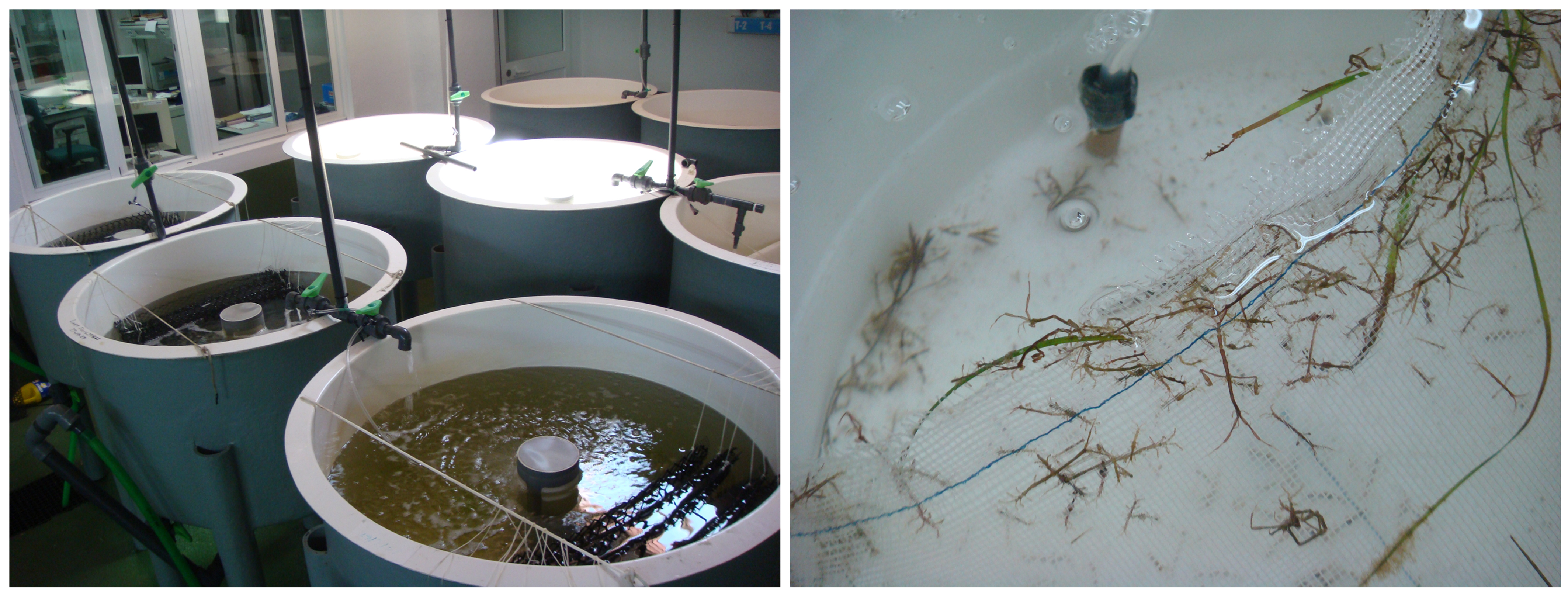
Caprellid species recorded along the coast of Granada
Caprella acanthifera Leach, 1814; Caprella grandimana (Mayer, 1882); Caprella hirsuta Mayer, 1890; Caprella liparotensis Haller, 1879; Caprella penantis Leach, 1814; Caprella scaura Templenton, 1836 (Especie invasora presente en puertos deportivos); Pariambus typicus KrØyer, 1844; Pseudolirius kroyeri (Haller, 1897); Phtisica marina Slabber, 1769; Pseudoprotella phasma (Montagu, 1804)
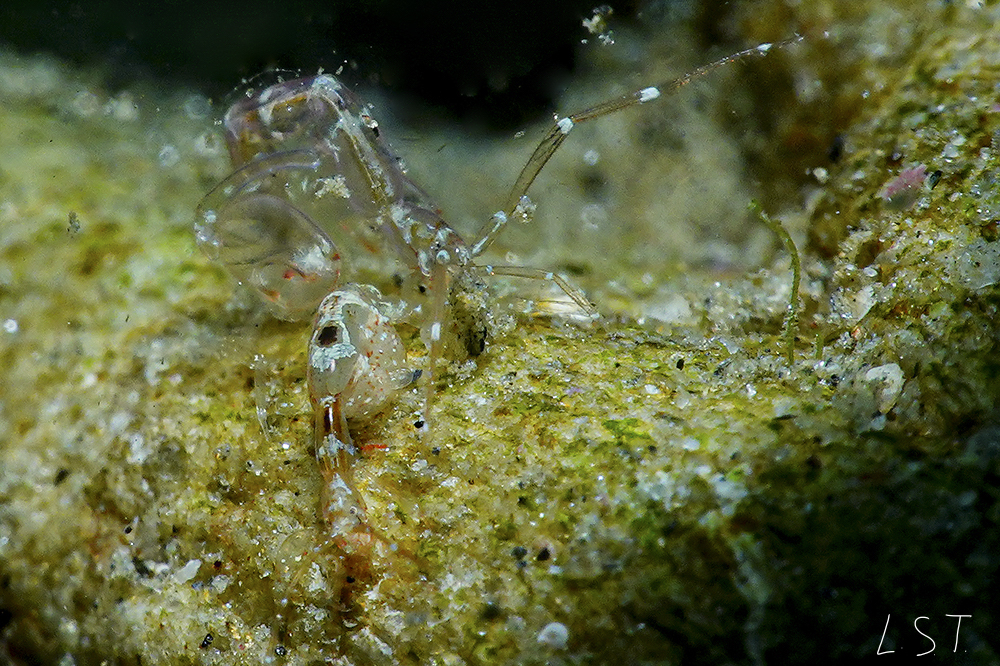 |
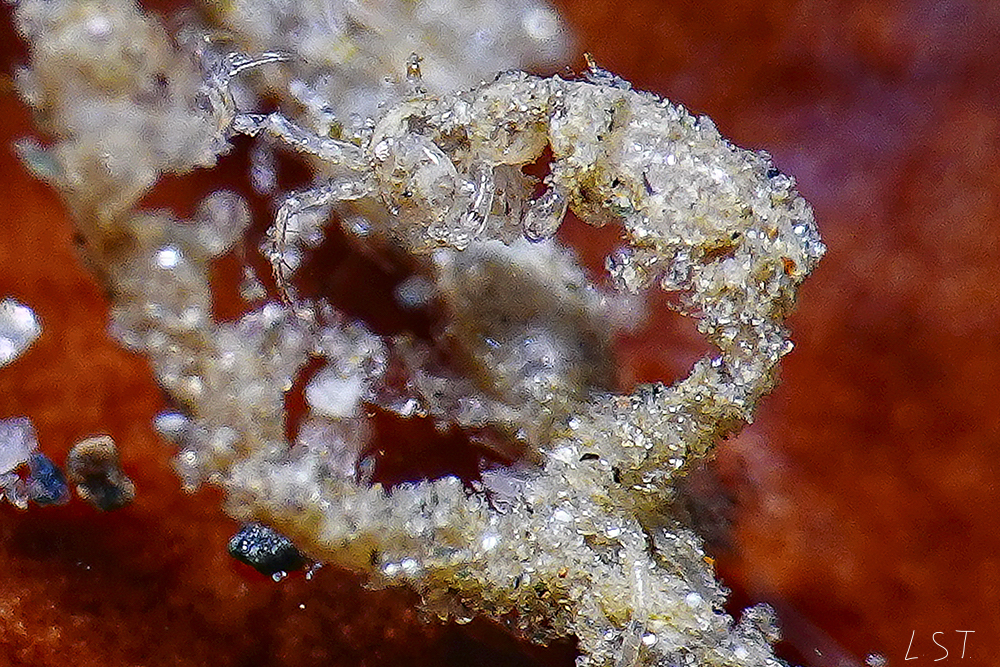 |
MORE INFORMATION
VIDEOS
Female with juveniles. Pseudoprotella phasma
Caprellid clinging on hydroid
Male and female of Caprella sp.
A huge number of caprellids clinging to sea cucumber to look for food
A caprellid defending its territory from a little prawn
30-10-2020 Punta del Vapor - 10 m.
BIBLYOGRAPHY
- Guerra-García JM, Cabezas MP, Baeza-Rojano E, Ros M, Navarro-Barranco C, Tierno de Figueroa JM (2014) Los crustáceos caprélidos de las costas ibéricas. Quercus 340: 26-34
JOSÉ MANUEL GUERRA GARCÍA

